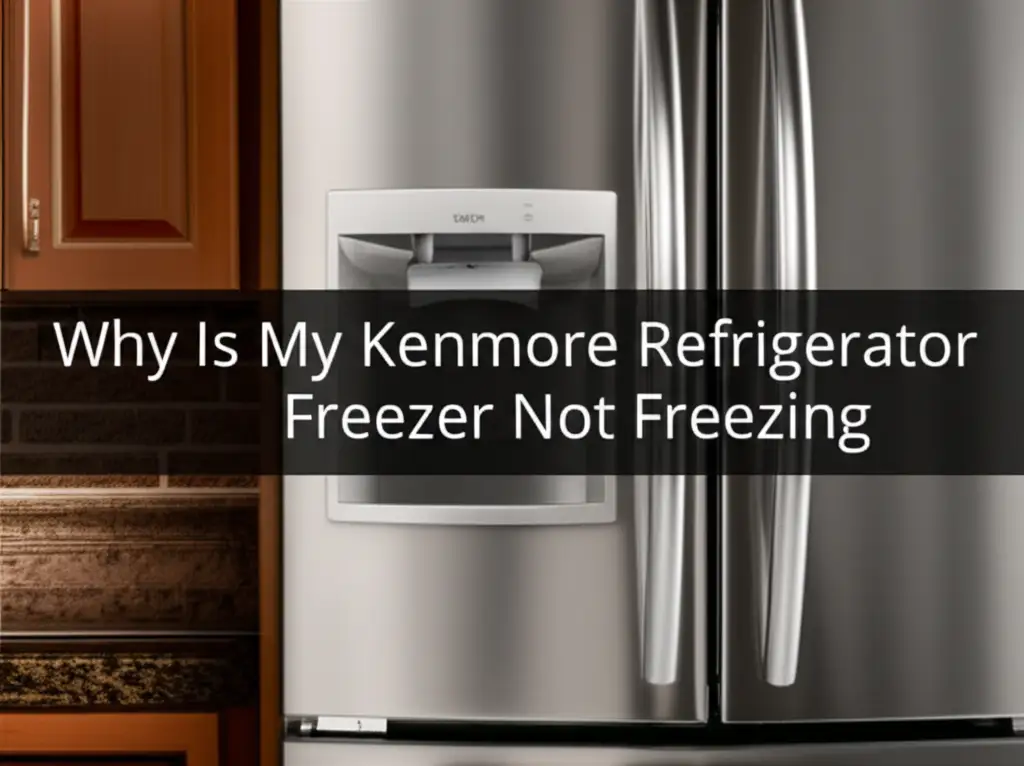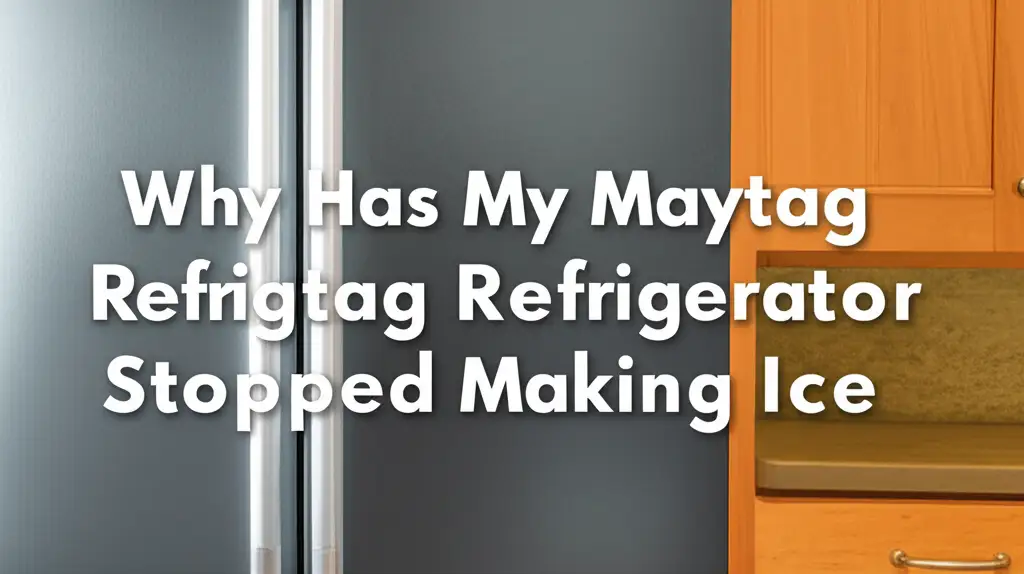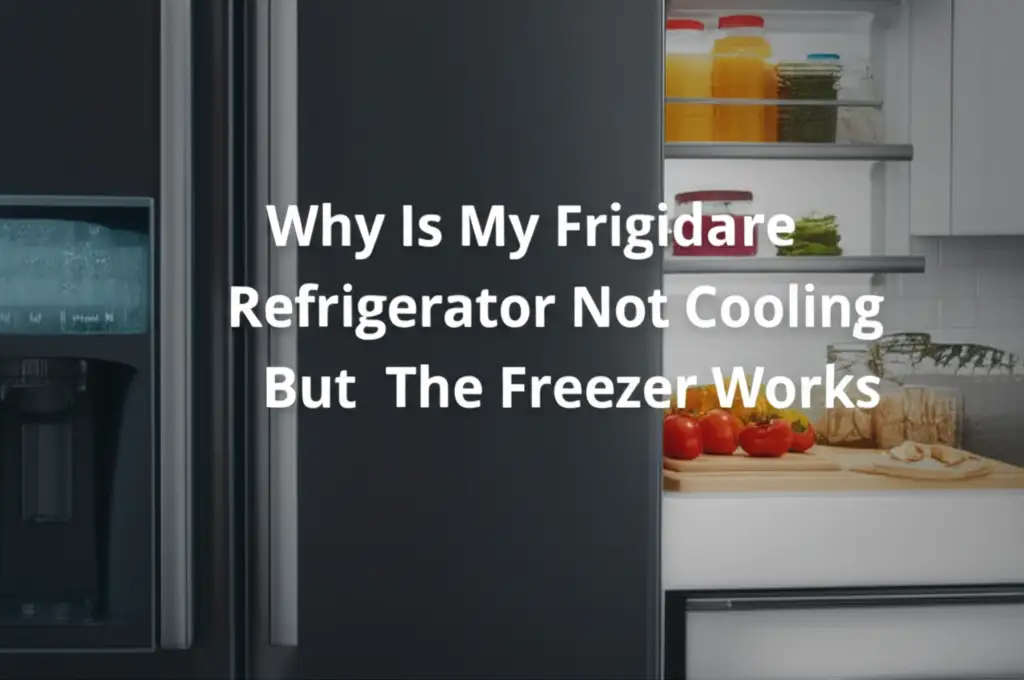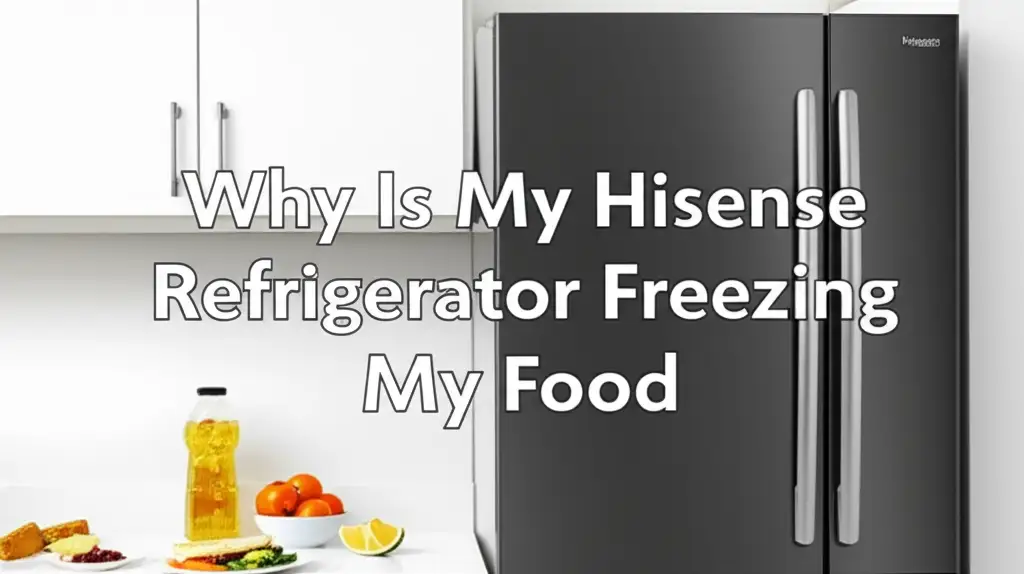· Katria Melrose · Appliance Repair · 13 min read
Why Is My Samsung French Door Refrigerator Freezer Not Freezing
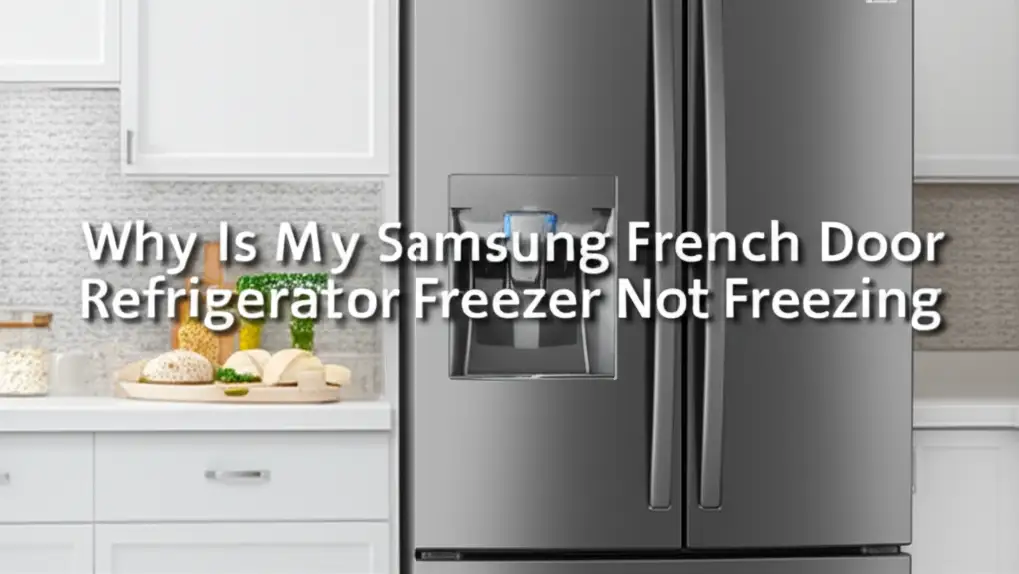
Samsung French Door Freezer Not Freezing? Here’s Why
It is incredibly frustrating when your Samsung French Door refrigerator freezer stops freezing. Your food spoils, and you lose peace of mind. I understand how concerning this issue can be. A freezer that does not freeze wastes food and creates an unexpected repair bill.
This problem is common with many modern refrigerators. We will explore the common reasons your Samsung French Door refrigerator freezer is not freezing. This article provides practical troubleshooting steps. You will learn to identify the cause and find solutions to get your freezer working properly again.
Takeaway
- Check power, temperature settings, and ensure the freezer is not in demo mode.
- Clear blocked vents and clean condenser coils for better airflow.
- Inspect door seals for damage, as this causes warm air leaks.
- Troubleshoot the defrost system, including the heater, thermistor, and timer.
- Consider professional help for refrigerant issues or compressor problems.
Why is my Samsung French Door refrigerator freezer not freezing?
Your Samsung French Door refrigerator freezer is likely not freezing due to issues with airflow, temperature settings, or vital components. Common culprits include blocked vents, dirty condenser coils, a faulty defrost system, or damaged door seals allowing warm air in. Less common but serious problems involve the compressor or refrigerant levels.
Check Power and Basic Settings for Your Samsung Freezer
My freezer not freezing is often a simple fix. We should always start troubleshooting with the basics. It saves time and prevents complex repairs. These initial checks help rule out common oversights.
Power Supply Issues
First, make sure your refrigerator is receiving power. Check if the power cord is fully plugged into the wall outlet. Sometimes, the plug can become loose. Next, inspect your home’s circuit breaker. A tripped breaker will cut power to the appliance. Reset it if necessary. Test the outlet with another small appliance. This confirms the outlet itself works correctly. A lack of power means no cooling.
Demo Mode or Sabbath Mode
Samsung refrigerators sometimes enter a “demo” or “show room” mode. This mode keeps the lights on but disables cooling. Food will not freeze in this mode. Check your owner’s manual for steps to exit demo mode. It usually involves a specific button combination on the control panel. Also, some Samsung models have a “Sabbath mode.” This mode turns off lights and alarms. It can also affect cooling if activated accidentally. Disabling these modes is simple. You can find detailed instructions on how to get your Samsung French Door refrigerator out of demo mode here.
Temperature Settings
Always verify your freezer’s temperature settings. The ideal freezer temperature is 0°F (-18°C) or colder. If the setting is too high, food will not freeze properly. Someone might have adjusted it by mistake. Look at the digital display on your French door refrigerator. Adjust the temperature to the recommended setting. Give the freezer several hours to reach the new temperature. Sometimes, a quick adjustment is all it takes.
Airflow Obstructions and Dirty Coils Impacting Freezing
Proper airflow is crucial for your freezer to work. If air cannot move freely, cooling performance suffers. Blocked vents or dirty coils can cause this. Addressing these issues helps restore freezing.
Blocked Vents
Inside your Samsung French Door freezer, cold air vents distribute chilled air. If these vents are blocked, air circulation stops. This means parts of your freezer will not get cold enough. Check for items pushed against the vents. Food packaging, ice cream containers, or large bags can easily block them. Rearrange items inside the freezer. Ensure at least one inch of space around all vents. This allows cold air to circulate freely.
Dirty Condenser Coils
Your refrigerator’s condenser coils release heat from the refrigerant. These coils are usually at the bottom or back of the unit. Over time, dust, pet hair, and debris accumulate on them. A thick layer of dirt insulates the coils. This prevents them from dissipating heat effectively. The compressor works harder but cannot cool the freezer. Regularly cleaning these coils is vital for efficient operation. You can learn how to clean under a refrigerator here.
Fan Malfunctions (Evaporator & Condenser Fans)
Two main fans help with cooling:
- Evaporator Fan: This fan circulates cold air inside the freezer compartment. If it fails, cold air does not reach all areas. You might hear no sound from inside the freezer, or a grinding noise.
- Condenser Fan: This fan pulls air over the condenser coils to cool them. If it stops, the coils overheat, and the compressor struggles. You might hear a loud buzzing or no noise from the back of the fridge.
Check if these fans are running. If you suspect a fan issue, professional help might be needed. Sometimes, clearing obstructions around the fan blades can solve it. Also, consider general cleaning for optimal performance. Learn how to clean your freezer here.
Defrost System Malfunctions Affecting Freezer Performance
Your Samsung freezer has an automatic defrost system. This system prevents ice buildup on the evaporator coils. If it fails, ice can cover the coils. This prevents air from cooling properly. A malfunctioning defrost system is a common reason for a freezer not freezing.
Defrost Heater
The defrost heater melts frost from the evaporator coils. This heater turns on periodically. If the heater is faulty, ice will build up. This ice acts as an insulator. It prevents the evaporator coils from cooling the air. You might see a thick layer of ice on the back wall of the freezer compartment. A continuity test can check if the heater is working. A professional technician can perform this test.
Defrost Thermistor/Sensor
The defrost thermistor, or sensor, monitors the temperature of the evaporator coils. It tells the control board when to activate the defrost heater. If this sensor fails, it might not signal the heater to turn on. This leads to excessive ice buildup. The sensor might give incorrect temperature readings. This causes the defrost cycle to run too often or not enough. A faulty thermistor can easily prevent proper freezing.
Defrost Timer/Control Board
The defrost timer or the main control board manages the defrost cycle. The timer tells the heater when to turn on and off. In newer Samsung French Door models, the main control board handles this function. If the timer or control board fails, the defrost cycle will not initiate. This leads to ice accumulation on the evaporator coils. This ice blocks airflow and inhibits cooling. Sometimes, a full power reset of the refrigerator can temporarily resolve control board glitches. Unfortunately, a truly faulty control board often requires replacement. You might also notice issues like ice in the bottom of your Samsung refrigerator if the defrost drain is clogged.
Faulty Door Seals and Water Leaks
Maintaining a consistent cold temperature in your freezer depends on a tight seal. Even a small gap can compromise performance. Faulty door seals let warm air into your Samsung French Door freezer. This makes the unit work harder and fail to freeze food.
Gasket Integrity
The gasket is the rubber seal around your freezer door. Over time, these gaskets can become brittle, torn, or develop gaps. When the gasket is damaged, warm air from your kitchen leaks into the freezer. This warm air causes humidity and frost buildup. It also raises the internal temperature. Test the gasket by closing a dollar bill in the door. If you can pull the bill out easily, the seal is weak. Clean the gasket regularly with warm, soapy water. This helps it maintain its flexibility and sealing power. Replacing a faulty gasket is a simple repair.
Water Leaks Causing Ice Build-up
Internal water leaks can also affect your freezer’s performance. A clogged defrost drain line is a common cause. When the drain line is blocked, water from the defrost cycle cannot escape. This water freezes at the bottom of the freezer or around the evaporator coils. This ice buildup obstructs airflow. It can even prevent the freezer door from sealing properly. You might notice pools of water inside or under the freezer. Clear any visible ice from the drain line. You can often flush it with warm water. However, some leaks might be from the water dispenser line or ice maker connections. For issues like water leaking from your Samsung refrigerator filter, a different troubleshooting approach is needed.
Refrigerant Issues and Compressor Problems
These are more serious problems, often requiring professional diagnosis. If the simpler fixes haven’t worked, it could be an issue with the core cooling system. Your Samsung French Door freezer relies on a properly functioning refrigerant system and compressor to create cold air.
Low Refrigerant Levels
Refrigerant is the chemical compound that absorbs heat from inside your freezer. It then releases that heat outside the unit. If the refrigerant level is low, it cannot absorb enough heat. This means the freezer will not reach freezing temperatures. Low refrigerant usually indicates a leak in the sealed system. This is a complex repair. It involves finding and repairing the leak, then recharging the system. Refrigerant leaks are not visible. A qualified technician uses special tools to detect them. This repair is best left to certified professionals.
Compressor Failure
The compressor is the heart of your refrigerator’s cooling system. It pumps the refrigerant through the coils. It also puts the refrigerant under high pressure. This pressure allows the refrigerant to absorb and release heat. If the compressor fails, it cannot circulate the refrigerant. The freezer will not get cold at all. You might hear a clicking sound when it tries to start, then silence. Or, you might hear a loud humming noise that abruptly stops. Sometimes, the compressor feels very hot to the touch. A compressor replacement is a major and expensive repair. It often justifies professional service.
Start Relay Issues
The start relay is a small component attached to the compressor. Its job is to provide a brief jolt of power to the compressor to help it start. If the start relay fails, the compressor will not start or will only hum briefly. This means no cooling. A faulty start relay is a common cause of compressor not starting issues. It is a relatively inexpensive part. However, accessing and replacing it requires technical knowledge. Sometimes, the refrigerator will click repeatedly without the compressor kicking on. This is a strong indicator of a faulty start relay.
Control Board and Sensor Failures
Modern Samsung French Door refrigerators rely heavily on electronic components. These components manage temperature and cycles. When they fail, cooling performance suffers. Faulty control boards or sensors can easily lead to a freezer that does not freeze.
Main Control Board Problems
The main control board acts as the “brain” of your Samsung refrigerator. It receives signals from sensors. It then sends commands to components like the compressor, fans, and defrost heater. If the control board malfunctions, it might send incorrect signals. It might fail to send signals at all. This can cause the freezer to stop freezing or to freeze intermittently. Signs of a failing control board include:
- Erratic temperature fluctuations.
- Lights or displays not working correctly.
- Other components (fans, compressor) not cycling as they should.
A control board issue often requires professional diagnosis. Replacing it can be costly.
Temperature Sensors (Thermistor)
Your freezer has temperature sensors, also known as thermistors. These sensors monitor the internal temperature. They send this information back to the main control board. The control board uses this data to regulate cooling. If a thermistor is faulty, it can send inaccurate temperature readings. For example, it might tell the control board the freezer is colder than it is. This causes the control board to reduce cooling cycles. As a result, the freezer’s temperature rises, and food does not freeze. Testing a thermistor requires a multimeter to check its resistance. A correct reading depends on the sensor’s temperature. This is a job often done by a technician.
When to Call a Professional for Samsung Freezer Repair
Sometimes, the issue with your Samsung French Door freezer is beyond basic troubleshooting. Or, it requires specialized tools and expertise. Knowing when to call a professional saves time and prevents further damage. I always recommend calling a professional for complex issues.
Complex Repairs
Issues like refrigerant leaks, compressor failure, or main control board malfunctions are complex. They involve sealed systems, high-voltage components, or intricate wiring. These repairs require specific tools and safety precautions. Attempting them without proper training can be dangerous. It can also cause more damage to your appliance. A certified appliance technician has the knowledge to diagnose these problems accurately. They also have the necessary tools to perform the repair safely. Don’t risk further damage or personal injury by tackling advanced repairs yourself.
Safety Concerns
Any repair involving electrical components or refrigerants carries safety risks. High voltage can cause electric shock. Refrigerants require careful handling due to environmental regulations and personal safety. If you are uncomfortable working with electricity, or if you suspect a refrigerant leak, stop immediately. Call a professional. Their expertise ensures the repair is done safely and correctly. They can also provide a warranty for their work. This gives you peace of mind. Investing in professional help for complex issues protects both you and your valuable appliance. Also, regular maintenance, including how to clean the refrigerator properly, can prevent some serious issues from developing.
FAQ Section
How long does it take for a Samsung French door freezer to get cold?
After plugging in your Samsung French Door freezer or adjusting its temperature, it typically takes 4-8 hours to reach the set temperature of 0°F (-18°C). If the freezer was completely warm, it might take up to 24 hours to fully stabilize and begin freezing food properly. Avoid overfilling it immediately.
Can I fix my Samsung freezer not freezing myself?
You can fix many common issues yourself. Simple checks like adjusting temperature settings, cleaning condenser coils, or clearing blocked vents are DIY-friendly. However, issues involving refrigerant, the compressor, or main control board require professional expertise due to complexity and safety risks.
Why is my Samsung freezer making a buzzing noise but not freezing?
A buzzing noise often points to a problem with the fan motors (evaporator or condenser). If the fan blades are obstructed or the motor is failing, it can hum or buzz without circulating air. This prevents proper cooling. It could also indicate a struggling compressor or a faulty start relay.
What temperature should a Samsung French door freezer be?
Your Samsung French Door freezer should be set to 0°F (-18°C) for optimal food preservation. This temperature effectively stops bacterial growth and maintains food quality. Any temperature above 5°F (-15°C) can risk food spoilage and indicates a cooling problem.
My Samsung freezer is cold but not freezing solid, what’s wrong?
If your freezer is cold but not freezing solid, it means the temperature is above 0°F. This often indicates a partial cooling failure. Common causes include a dirty condenser coil, a failing defrost system allowing ice buildup, a weak door seal, or a low refrigerant charge. Check for airflow blockages and clean the coils first.
Conclusion
A Samsung French Door refrigerator freezer not freezing is a common problem. However, it usually has a solvable cause. We explored several key areas. These include basic power and temperature checks, airflow maintenance, and defrost system integrity. We also looked at door seal issues. Finally, we discussed more complex component failures like the compressor or control board.
By systematically troubleshooting, you can often identify the root cause. Many simple fixes, like cleaning coils or clearing vents, are within your reach. Remember to prioritize safety. If the problem involves sealed systems, electrical components, or refrigerant, call a qualified technician. Regular maintenance, like cleaning under your refrigerator, can prevent many issues. Taking prompt action ensures your food stays safe and extends the life of your valuable Samsung appliance.


